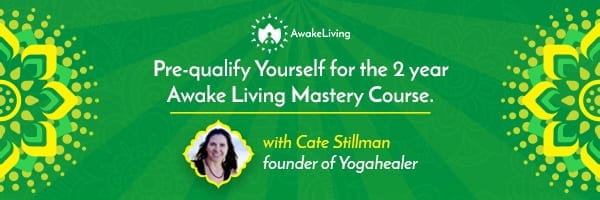
Coach For Success, Five Tips From A Horse Trainer
My five year old horse named Groovy was given to me as a gift when he was only one and a half years old. I was beyond ecstatic to have my own “baby,” horse. I dragged his youth out. I called him a yearling longer than I should have. Then I called him a colt longer than I should have. It was because he was going to learn everything from ME. I would be his leader, aka boss mare. That translates into life lessons and experiences, that will be provided by me. What a scary thought. I really had no idea how to do this.
How I Learned to Take Responsibility as A Trainer
If a horse becomes dangerous, develops bad habits or misbehaves, it is 100% on the trainer. It’s never considered the horse’s fault. The human trainer must take full responsibility. If a trainer is reactive or mean to a horse, the horse has no idea what’s happening. The horse will respect you as a leader but not if you are an asshole.
Yoga, coaching, and horses. How do these three things go together? Yoga provides balance, vital for equestrians. Yoga is the best and fastest way to achieve strength, balance and focus. Yoga teaches you how to breathe correctly. It provides simple meditations, and improves your health, wellness, ability to relax, and posture. Yoga can be very spiritual and I believe horses are extremely spiritual as well. There is even a pose named after the Horse. An intermediate standing pose that requires flexibility in the hips, horse pose can help you get on and off your horse safely.
A couple of years ago, I signed up for a life changing course, Body Thrive with Cate Stillman. I took it to another level by signing up to be a coach, yet I realized I needed to do some work to reprogram myself and break my ancestral patterns. That same month I started the Yoga Health Coaching program, Groovy came back to live with us after living in a pasture with two other colts and learning how to be a horse.
Horse Coaching is a Bit LIke Human Coaching
It was time for Groovy to get saddled, learn how to carry a bit, and take a human down the trail. For the bit, I used a string in his mouth several times and pulled with leverage before I used metal with reins attached. For the saddle, I placed different items on his back with various textures, pads, blankets, tarps, and then the saddle. I did these steps with Kaizen. Small steps to make sure Groovy was comfortable and relaxed before I moved to bigger aspects of training. What amazed me about learning how to be a coach for others was that I could transfer those skills onto my horse and vice versa. I put my horse training skills into my human coaching skills. I sought 1% improvement. If he accepted little things, I praised him and always ended the day on a good note without pushing him too far. I let him know he was enough and by handling new things calmly and patiently, we were on the right track.
Groovy Had An Amazing Daily Routine
Fortunately, Groovy had his daily routine dialed in. His Ayurvedic habits were much stronger than mine. He lived in tune with nature’s rhythm. He relaxed and spent more time sleeping at night. He ate a 90% green diet. He took lots of time out to play with his friends and enjoy his day to day life. He exercised every single day and had a good deal of self preservation.
And did I mention I have two older horses, Finn and Hot Wheels? I never paid as much attention to their daily lifestyle, until I studied health and wellness coaching. I realized my horses had so much to teach me, especially my young colt, Groovy. He was being molded by me and I had a lot to learn as a coach. Patience was the biggest lesson my horses taught me. When I was working as an Occupational Therapist, I had been very patient with my clients. Somehow I wasn’t as patient with my horses.
Now I am the Coach
When I got my first horse, I didn’t really know how to interact with him. I grew up hopping on a horse and riding off into the sunset. Now I was the trainer, I needed some basic steps to follow from an experienced horse trainer. I turned to Pat Parelli. He is a people lover and knows how to work with humans AND teach them how to be “trainers” as well. He was a student and follower of Tom Dorrance and Ray Hunt. These two were the first true horsemen who started teaching horsemanship that was considered a more humane way to start a horse vs. the traditional way of “breaking” a horse. It is how the term “natural horsemanship” started.
Here are five tips for training horses by Pat. I have learned that the same lessons apply as a human coach to help my herd, I mean tribe achieve success.
- Achieve success with patience not force.
This is all about the ask. I wiggle my finger at my horse to ask him to back up. It is a much better approach than using a whip. The level of “ask” happens in phases. My other two horses I bought already trained. They were trained too quickly, before they were ready and with force. With that traumatic experience in their memory, it took nearly a year before I could touch my first horse, Finn, around the ears without him flinching. Ear twisting is a common procedure for some people to get a horse to stand still. I’d rather be patient and slowly teach them so I can just ask.
As a human coach, I teach Kaizen, small continuous improvements. my prefered method. Be patient, be slow, and then ask without force. No one says you must do this or you must do that. We do say, however, that some habits are non negotiable if you want to reach your goals, but take your time. Don’t rush. I let them figure it out for themselves, and for some it takes a longer time than for others.
- Seek partnership with your client, not dominance.
I most definitely do not want to dominate my horse. It is so much more enjoyable to let them believe, that what you are doing is their idea. Respect is what I’m looking for, and a must if you want to be safe. My
horse may not maneuver down a technical steep switchback trail as well as I liked, but he did it.
As a human coach, I prefer to be a guide and to lead my clients down the right path without overwhelm. This is when seeking a B- becomes huge, vs. an A+. Just try it without seeking perfection. Reward the try.
- Achieve goals with trust and teamwork, not fear.
My baby horse has absolutely zero fear of me. He completely trusts me, which is one of the best feelings any horse owner could ever have. I have learned to be very receptive and open to his requests. Instead of reacting harshly, I pause, reflect, and then proceed. Slow and steady. Now my older horse loves it when I touch his ears. When Groovy watches how Finn crosses bridges, water, or any technical obstacles, he is more confident in seeing another horse he trusts being up to the task. He has his own herd just like humans have a tribe.
In health coaching, teamwork is huge. In studies, 70% of people in a group setting achieve more success, than those who go it alone. While my horse and I are a team of two, my clients are in a group setting making up a tribe. They can offer each other peer support and accountability to help them reach their habits without fear. Trust is huge!
- Request new behavior, without intimidation
There is nothing better than asking your horse to do something for you with the smallest request. For example, instead of using spurs to push my horse forward, I can just smile with of my four cheeks, (2 on my face, and 2 on my bum), and think G-O. Or, instead of using a strong bit to make them stop, I can just lean back and say “whoa” softly.
As a human coach, I adapt to people’s needs. People participate when they are ready, if not, I recommend doing it again. We are talking about changing our lifestyle after all. Screaming and yelling, “JUST DO IT”, like my field hockey coach, would be a pointless waste of my time and energy. Again, I am more of a guide. I am there to provide information and encourage you more than anything.
- Form alliances based on harmony and mutual respect instead of coercion
If I treat my horse like an intelligent being and a friend, there is no need for coercion. If we have harmony together, we will achieve success and we will be partners. This comes with lots of practice. Not repetition. The Arabian breed is not a fan of repetition but they will definitely practice with you. I have 3 Arabians, by the way. Riding down the trail is always a practice in seeking subtle improvements.
As a coach for humans, I practice with my students. I practice meditation. I practice self care. It is a lifestyle where we can seek automation with these simple habits that are game changers in the world of radiant longevity that Cate offers, and I also, being a Yoga Health Coach. We can seek harmony without forcing ourselves to do these habits with willpower, and soon it will dawn on us, that willpower is no longer even relevant. Walk the talk and you will have harmony in your everyday life and with your horse.
Next time you have challenges coaching a human client, be grateful you are not coaching a 1,000 pound beast. I love coaching horses and humans. Hopefully, you can learn from four legged friends when the opportunity arises. See what happens. Give it a try. Watch them closely and you will learn more than you can imagine. And thank you Pat Parelli for your five tips on training horses and…humans.
Happy Coaching.



